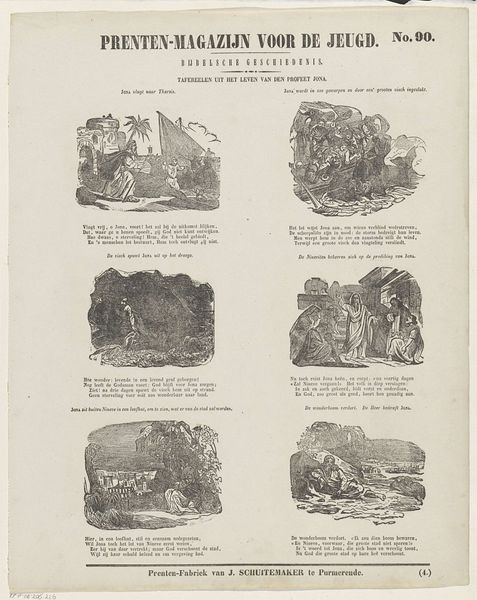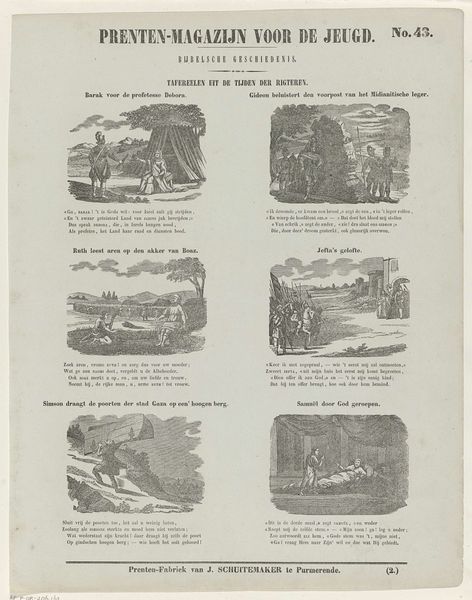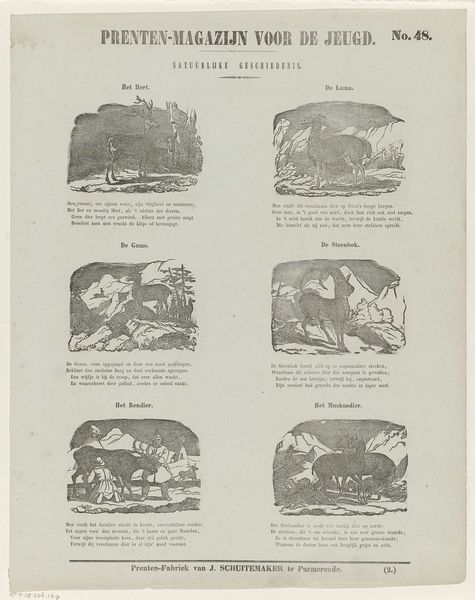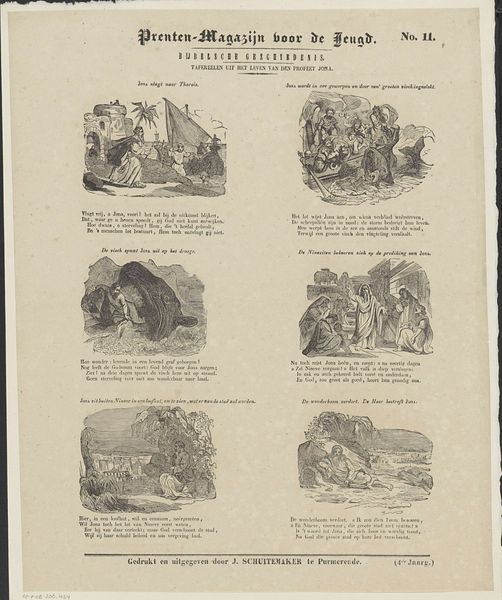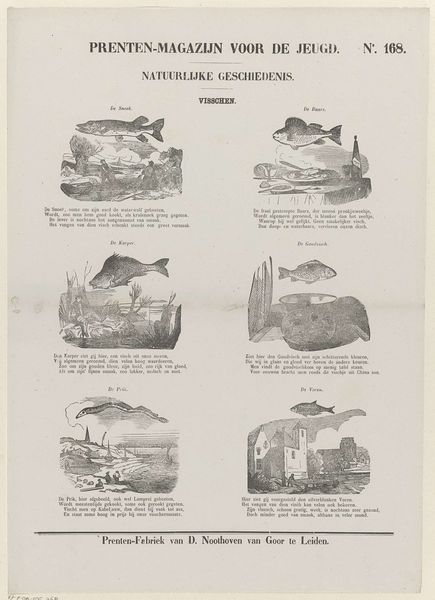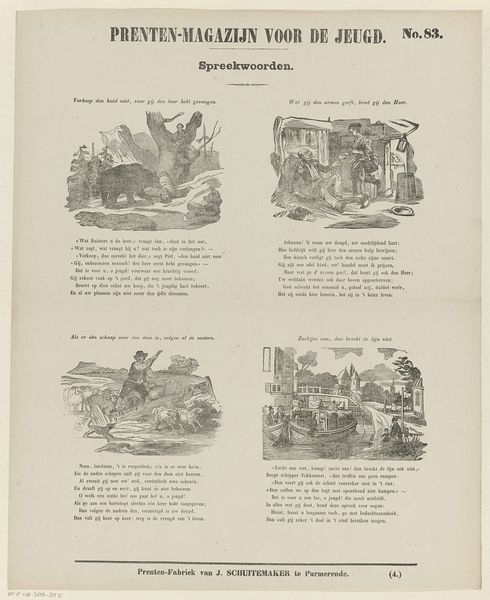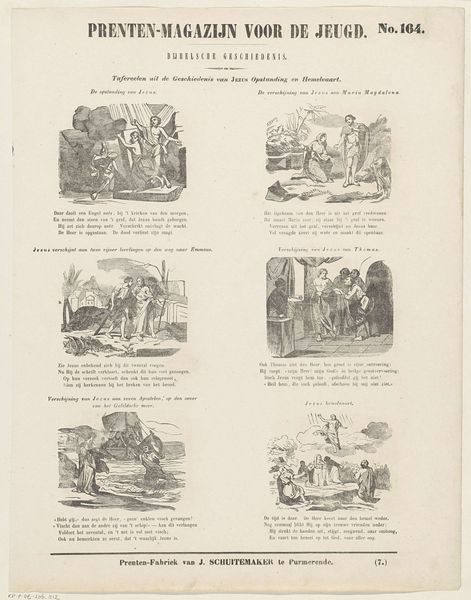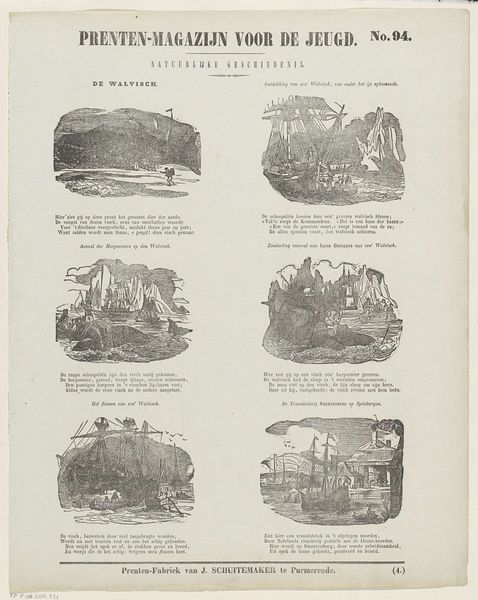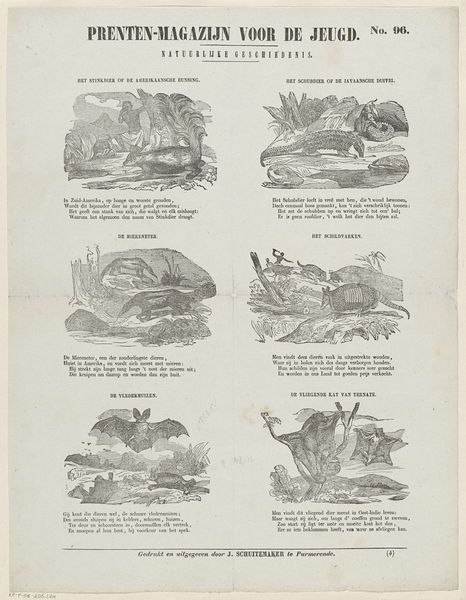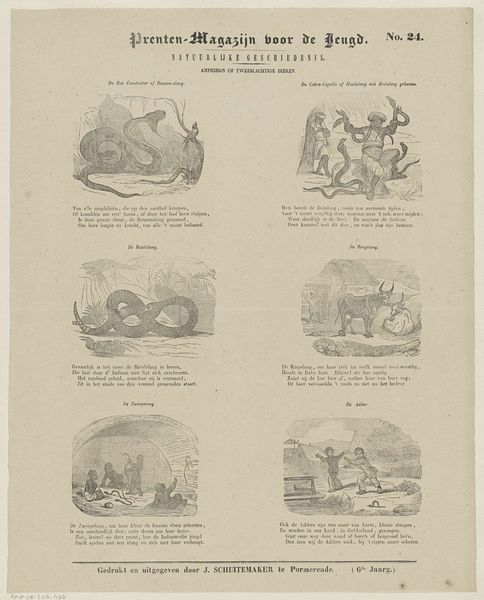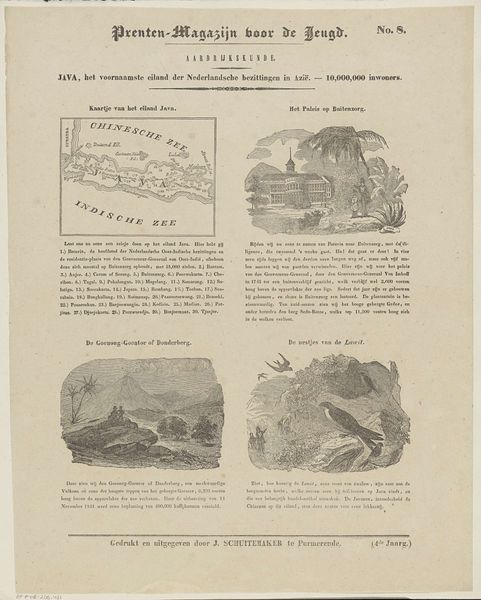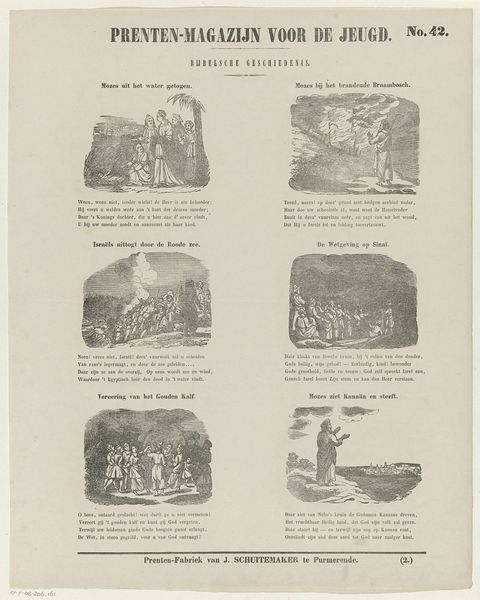
print, engraving
#
narrative-art
# print
#
old engraving style
#
personal sketchbook
#
genre-painting
#
engraving
Dimensions: height 413 mm, width 327 mm
Copyright: Rijks Museum: Open Domain
Curator: Here we have "Water-Zoogdieren," an engraving made around 1850 by Jan Schuitemaker. What catches your eye initially? Editor: The stark black and white illustrations against the paper creates a sense of distance; the details depicted in each scene still feel quite vibrant. It makes me think about how such imagery circulated back then. Curator: Indeed, and this work, translating to "Water Mammals", appeared as number 95 of Prenten-Magazijn voor de Jeugd, or Prints Magazine for the Youth. This would have been encountered within homes or schools. Its purpose extended beyond mere education. The very notion of classifying nature serves underlying political and cultural aims of controlling the natural world. Editor: Right, there's a clear intention to categorize and present a particular viewpoint. The panels include seals, walruses, and even what seems to be a mermaid – all framed alongside human figures and their vessels. How might this depiction of the marine environment shape youthful understandings of colonialism or scientific progress during that period? Curator: I believe the imagery connects deeply to discourses on Dutch identity during this epoch. There are narratives on Dutch connection to waterways, exploration of the world, their place, and perhaps the potential for domination, over different species and landscapes, thus suggesting both control, curiosity, and potential impacts on cultural understanding regarding gender, social differences and historical contexts. Editor: I also find it thought-provoking to consider how this imagery intersects with the Romantic idealization of nature at the time, whilst also promoting proto-scientific methods of observing, categorizing, and even perhaps subtly objectifying these aquatic creatures. This work becomes a locus where enlightenment thought, gender roles, and an emergent ecological consciousness begin their entangled dance. Curator: Yes, it makes you consider the complex and fascinating intersections of childhood, science, culture, and empire that played a large role back then. Editor: Absolutely. By teasing apart those different layers, we can reveal broader ideas. It moves beyond classification and really explores its intersectional impact on gendered, social and class contexts within that time.
Comments
No comments
Be the first to comment and join the conversation on the ultimate creative platform.
